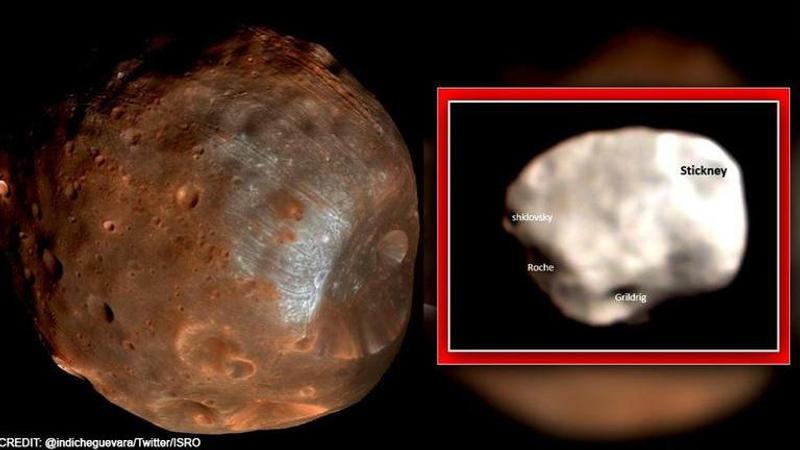Published 13:21 IST, July 4th 2020
Mars Orbiter Mission shares latest image of Mars biggest moon 'Phobos', netizens react
Many netizens compared Mars's biggest moon to an asteroid, while the rest said they missed MOM. Check out the reactions from the netizens here:

Soon after Indian Space Research Organisation (ISRO) shared the latest image of 'Phobos'- Mars' biggest moon taken from a camera onboard the Mars Orbiter Mission (MOM), space enthusiasts praised the space agency for the new development. The image of 'Phobos' was shared by ISRO on Wednesday, July 1, following which netizens' reactions started to pour in on social media.
The image was taken when MOM was about 7,200 km from Mars and 4,200 km from Phobos. The composite image was generated from 6 Mars Colour Camera (MCC) frames and was color corrected. The spatial resolution of the image is 210 m, ISRO informed.
Many netizens compared Mars's biggest moon to an asteroid, while the rest said they missed MOM. Apparently the official ISRO's Mars Orbiter handle on the microblogging site Twitter was last updated in the year 2018. Check out the reactions from the netizens here:
Last updated post by MOM on Social media
About 'Phobos'
'Phobos' is largely believed to be made up of carbonaceous chondrites. The violent phase that Phobos has encountered is seen in the large section gouged out from a past collision (Stickney crater) and bouncing ejecta. Stickney, the largest crater on Phobos along with the other craters Shklovsky, Roche and Grildrig are also shown in the image, ISRO statement read further.
Updated 13:21 IST, July 4th 2020



